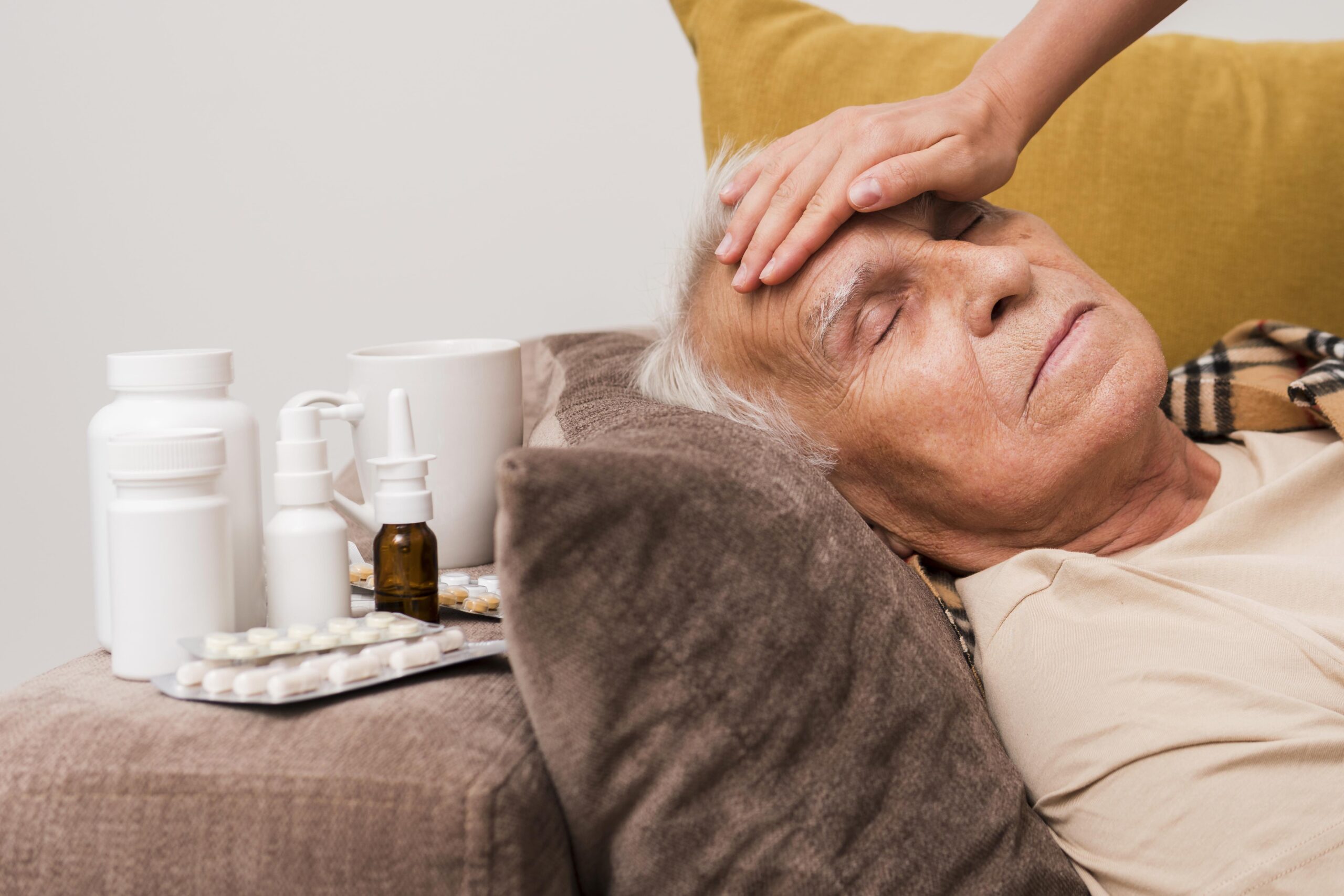
Stroke treatment, known as Pakshaghata in Ayurveda, focuses on managing the sudden loss of function in one part of the body, usually caused by disrupted blood flow to the brain. In Ayurveda, this condition is classified as a Vata Vyadhi, a disorder resulting from the aggravation of the Vata dosha, which controls movement, nerve impulses, and cellular communication. Ayurvedic stroke treatment addresses not just the neurological symptoms but also aims at correcting systemic imbalances. It emphasizes both physical rehabilitation and energetic rebalancing, making stroke treatment a holistic and restorative process in Ayurvedic medicine.
Understanding Stroke in Ayurveda
In Ayurvedic philosophy, health is a balance of the three doshas—Vata, Pitta, and Kapha. Vata, being the principle of movement, is closely associated with the nervous system. When Vata becomes disturbed, it can lead to a breakdown in nerve coordination and muscular control, manifesting as paralysis or weakness on one side of the body. Pakshaghata literally means “affliction on one side”, which aligns closely with the clinical presentation of a stroke. The approach in Ayurveda is to pacify the aggravated Vata dosha, detoxify the body, nourish damaged tissues, and restore the body’s natural healing capacity.
Panchakarma Therapies: Detox and Restoration
A central component of Ayurvedic stroke treatment is Panchakarma, a set of five therapeutic procedures designed to cleanse and rejuvenate the body. These treatments are tailored to the individual’s constitution (Prakriti), current doshic imbalances (Vikriti), and the stage of recovery.
Abhyanga, or full-body oil massage with medicated oils, helps improve circulation, reduce muscle stiffness, and strengthen the limbs. Oils like Mahanarayan Tailam or Dhanwantharam Tailam are commonly used to nourish nerves and tissues. This is followed by Swedana, a steam therapy that opens up the channels (Srotas) and promotes flexibility.
One of the most effective therapies for stroke-related Vata imbalance is Basti, or medicated enema therapy. Basti helps deliver herbal decoctions and oils directly into the colon, the seat of Vata, facilitating deep detox and nourishment of the nervous system. Nasya, or nasal therapy, is also often administered to directly influence the brain and central nervous system. Finally, Shirodhara, which involves the gentle pouring of warm oil on the forehead, helps soothe the mind, reduce stress, and support mental clarity.
Herbal Medicines and Rasayanas
Ayurvedic physicians may prescribe a variety of herbs and polyherbal formulations to support neurological recovery. Ashwagandha is a powerful adaptogen that enhances nerve regeneration, strength, and immunity. Brahmi and Shankhpushpi are revered brain tonics that improve cognition, memory, and mood. Vacha is traditionally used to improve speech and help overcome issues such as aphasia that may result from stroke.
Guduchi (Tinospora cordifolia) is often included for its immunomodulatory and anti-inflammatory properties. Rasayana therapies, which are Ayurvedic rejuvenation treatments, play a crucial role in post-stroke recovery by revitalizing the body’s tissues. Classical preparations like Chyawanprash, Ashwagandharishta, and Brahma Rasayana are sometimes recommended to improve vitality and long-term recovery.
Diet and Lifestyle Management
Diet plays an essential role in Ayurvedic healing. Post-stroke patients are advised to follow a Vata-pacifying diet, which includes warm, soft, and easily digestible foods. Ghee, cooked grains like rice and wheat, stewed fruits, and nourishing soups made with moong dal and vegetables are commonly recommended. Cold, dry, and processed foods are discouraged, as they tend to aggravate Vata.
In terms of lifestyle, stroke patients are advised to follow a regular daily routine, get adequate rest, and avoid stress and excessive exertion. Gentle yoga, pranayama (breathing exercises), and meditation may also be introduced once the patient gains some strength. These practices help improve mental clarity, emotional stability, and overall well-being, which are essential for recovery.
Benefits of Ayurvedic Stroke Rehabilitation
Ayurvedic therapies can provide significant support in the rehabilitation phase of stroke recovery. These therapies aim to improve muscle strength, joint mobility, speech, coordination, and mental clarity. With consistent treatment, patients may experience improvements in mobility, energy levels, and quality of life. The holistic approach of Ayurveda supports not just physical recovery but also mental and emotional healing—areas often overlooked in conventional rehabilitation programs.
Precautions and Integration with Modern Medicine
It is important to note that Ayurveda is not a replacement for emergency stroke care. Immediate hospitalization and medical intervention are essential during the acute phase of a stroke. Ayurvedic treatments are most effective in the recovery and rehabilitation phase, once the patient is stable. Always consult a qualified neurologist and an experienced Ayurvedic physician before beginning any treatment.
Ayurvedic stroke care is best implemented in an integrated medical setup, where conventional medicine is used for diagnosis and emergency management, and Ayurveda is used for long-term care and recovery. Greenwich Ayurveda hospital in Kerala specialize in stroke rehabilitation and have shown encouraging results with combined therapies.
Conclusion
Greenwich Ayurveda Hospital offers a time-tested, holistic approach to post-stroke care, focusing on restoring balance in the body, calming the nervous system, and promoting overall wellness. With therapies like Panchakarma, herbal medicines, and supportive diet and lifestyle practices, Ayurveda can help stroke patients regain mobility, mental clarity, and independence. However, it should always be used under the supervision of qualified professionals, and preferably in combination with modern medical care for optimal results in stroke treatment
BY: admin
Uncategorized
COMMENTS: No Comments
